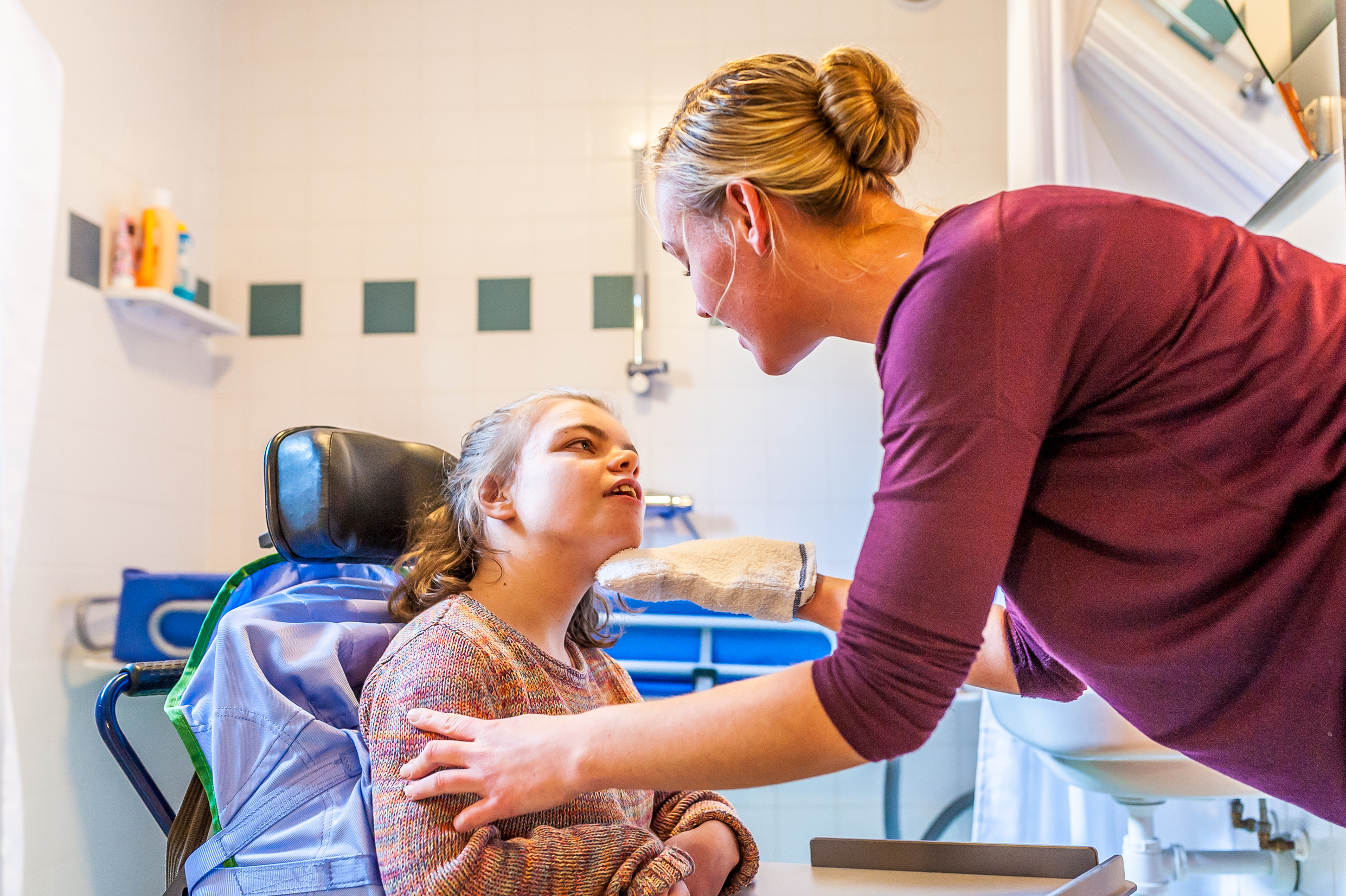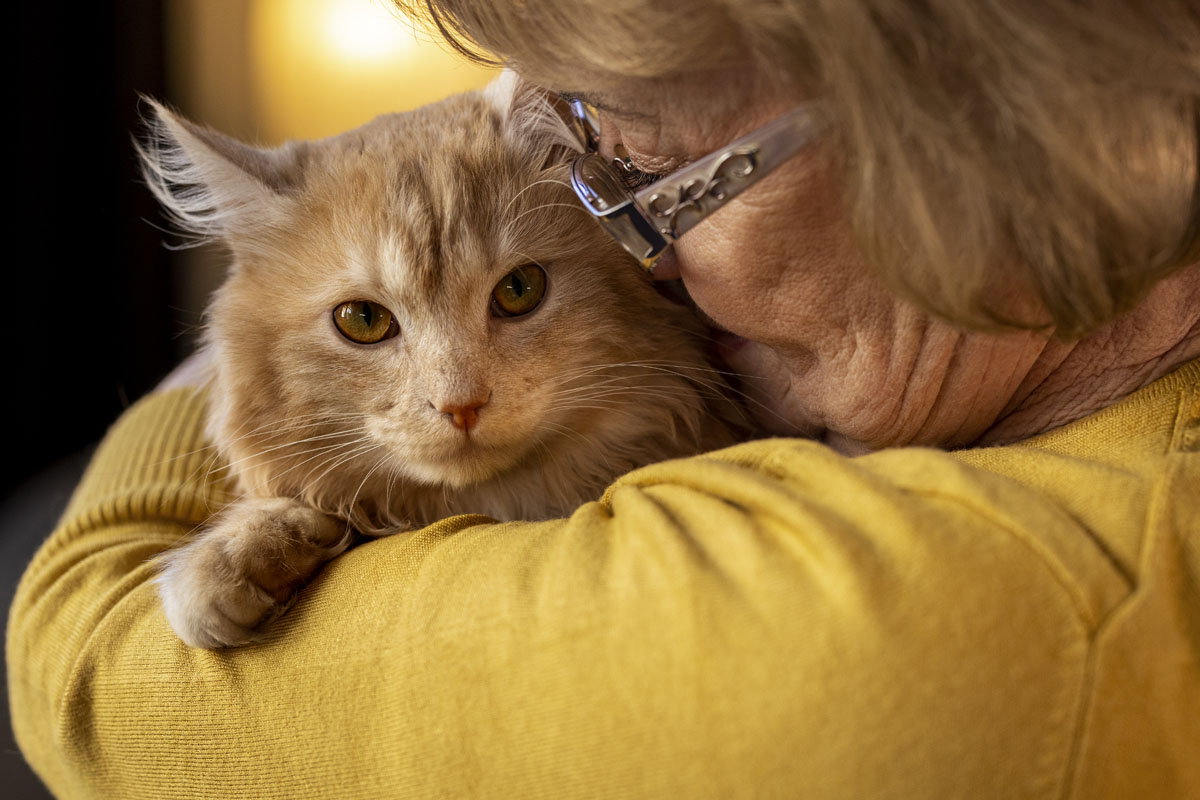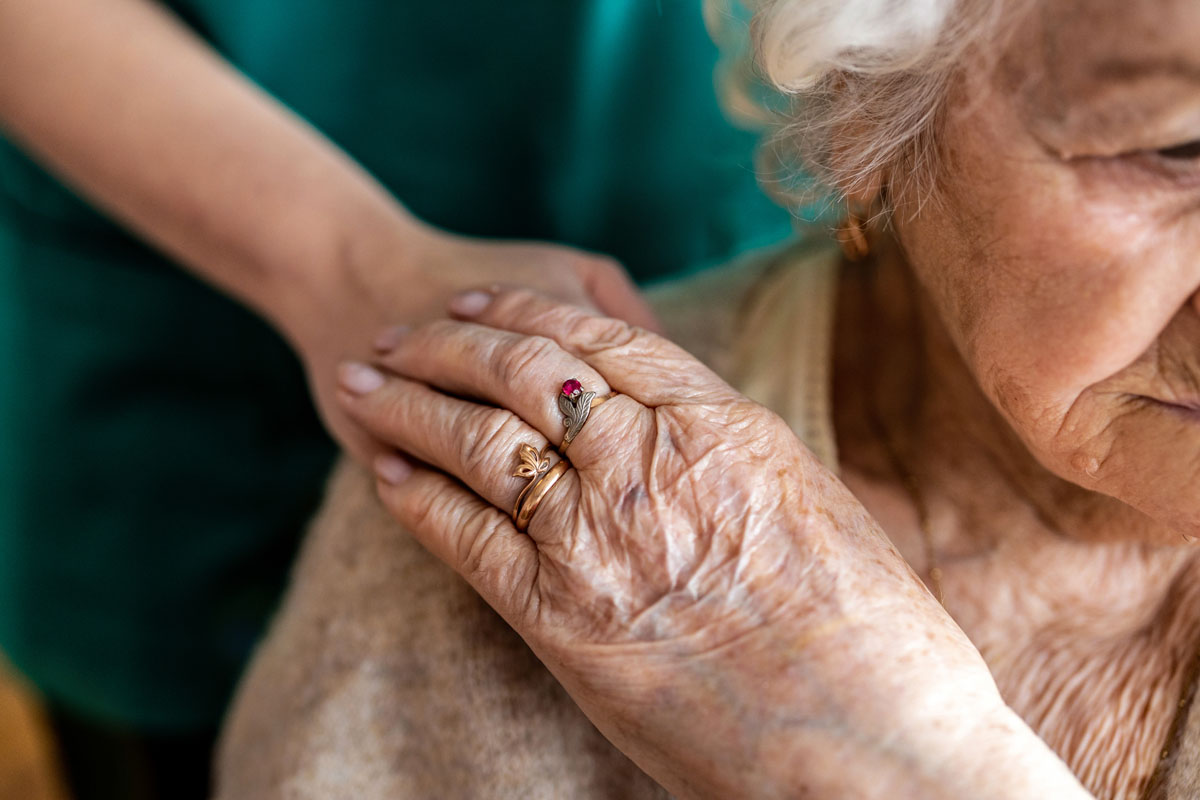You must support the person’s strengths, interests and rights when following the
individualised plan.

Image by Goldsithney, Shutterstock, Shutterstock licence
Human rights
The person receiving support is entitled to have their rights upheld and respected. This means upholding their basic human rights, including their right to make choices about their own lives, their right to access food, shelter, warmth and the company of others and their right to a place in the community without discrimination. It also means the person has the right to make complaints.
People accessing services have the right to:
- dignity and respect
- freedom of expression
- self-determination, choice and control
- confidentiality and privacy
- freedom from discrimination, exploitation, abuse, harm, neglect and violence.
Discrimination
Written into our basic human rights is the right to freedom from discrimination.
When implementing activities listed in a person’s plan, you must avoid any actions that could be discriminatory. You also need to be aware of and show respect for the person’s cultural and religious beliefs. You must consider these beliefs and the way they affect the tasks you carry out.
For example:
- If a person belongs to a certain religion, they have the right to eat the foods that meet their religious needs.
- If a person wishes to speak their native language, you cannot force them to speak English.
Duty of care
While aspects of WHS legislation may vary between states and territories, there are common legislative requirements
and obligations under the duty of care principle.
People who access aged care, home and community care and disability services have a right to receive services that
respond to their needs and rights, even if that comes with an element of risk. In turn, support workers and
coordinators have a duty of care to keep clients and residents safe. Everyone in the community service environment
has a duty of care for themselves, the people they care for, visitors and each other. Negligence occurs when duty of
care is breached and causes harm to the person.
 Apply your skills
Apply your skills
Here are some examples of duty of care. Drag and drop each example into the correct duty of care category. Select ‘Check’ to see if you are correct.
Dignity of risk
Everyone has the right to make choices for themselves, even if you do not agree with those choices or they are not
written in their plan. This is known as the dignity of risk.
For example, an older person can refuse to take their medications or use their walking frame. However, the person’s dignity of risk must be balanced with your duty of care. This means that you are responsible for ensuring that:
- the person understands the consequences of their choices, such as feeling unwell if they do not take their medication
- the person is given the right information about that choice, such as talking to their general practitioner (GP) if they have diabetes but do not want to follow the diet that they have been recommended
- the risk that the person is taking does not affect anyone else. For example, the person does not have the right to smoke inside a facility because it can put others at risk.
You must balance their duty of care with the person’s dignity of risk and you may need guidance about how this can be done. You must allow for a person’s right to dignity of risk while ensuring that you are acting within your job role. This may mean simply reporting a concern or problem. When determining types of support in consultation with the person, you must ensure that no activities are agreed to that a reasonable person would anticipate could cause harm.
Examples of ensuring the dignity of risk include:
- allowing a person to work in the garden and prune roses, even if you are worried that they might scratch themselves or fall
- allowing a person to wander unrestricted but taking steps to reduce their chance of falling
- allowing a person who uses a wheelchair to go shopping alone, even if you worry that they might be an easy target for having their money stolen.
 Case study
Case study
This case study is about ensuring a person's wishes and interests are still met, while balancing the need to keep them safe from harm.
Charles is 91 years old. He used to be a pilot and has loved planes all his life. His goals in his
individualised plan include attending more community outings and reconnecting with his passion for flying, which he
misses terribly. Charles has dementia and is often confused. He is able to walk but is unsteady on his feet. He had
a fall a couple of years ago and broke his hip. His next of kin is his 40-year-old grandson, Noel. Noel is worried
about Charles’s mobility and is fearful that he might not recover if he had another fall.
There will be an air show in town next month, showcasing the classic planes that Charles used to fly. Staff have
suggested that this air show would be a great opportunity for Charles and may assist in meeting some of his goals.
Noel is adamant that Charles should not attend, stating that with the bustling crowds and unknown environment,
Charles could easily have a fall. Noel says it would be irresponsible to allow Charles to attend.
Staff look for moments when Charles is lucid and show him flyers about the event. During these times, Charles
reminisces about his flying days and tells staff members story after story. He keeps the flyer by his bed in the
room.
A key staff member who knows Charles well asks Charles and Noel to meet to discuss the show. Together they come up with a solution that addresses both the staff’s duty of care to Charles and Noel’s safety concerns. It is decided that Charles will attend the show but will use a wheelchair to protect him from the crowd and reduce the chance of him having a fall. Noel has decided he will attend with his grandfather and is looking forward to getting to know more about Charles’s past.
 Record your thoughts
Record your thoughts
Document your thoughts
to each of the questions below about the case study. When you have finished, select Create Document to export
your content and keep for later. Privacy and confidentiality
Maintaining privacy and confidentiality of the person’s information is part of respecting individual rights. It is
also your legal responsibility.
Any information that could identify a person must be kept confidential. This includes names, addresses and medical
conditions. You do not necessarily have to use the person’s name to breach their confidentiality – the person’s
condition or other attributes may provide enough information to be identifying.
When you are talking to a person about their personal care needs, you must take care to do so in a place where others
cannot overhear. This includes other workers, family members and friends who are not involved with the care or who
do not need to know the information.
In most cases, the person needs to give consent for their personal information to be shared and discussed with
others, including people who are close to them.
 Select to learn more
Select to learn more
Select each bar to expand and reveal further information about privacy and disclosure.
 Select to learn more
Select to learn more
Privacy and confidentiality include how information is collected, stored, accessed and released to other
people.
Select the items on the image to reveal examples of privacy policies and procedures.
Image
by Mind Pro
Studio, Shutterstock, Shutterstock
licence
 Case study
Case study
This case study is about a support worker, Tony, accidentally disclosing personal information.
Tony is assisting Lara with her personal care. Lara has to go to the hospital for an operation and expects to be away
from home for two weeks. She is worried about who will feed her cat and water her indoor plants.
Tony sees Lara’s neighbour as he is leaving and tells him about Lara’s operation and that she needs someone to help
with the cat and the plants while she is away. The neighbour says he is happy to help. Tony runs back inside and
tells Lara that he has told the neighbour about her trip to the hospital and that the neighbour will help.
Lara turns white with rage. She says, ‘The neighbour is so nosy. They are always going through my mail and checking
through the windows. I don’t want them to know my business’. Tony has breached Lara’s right to privacy by telling them about her plans without her permission .

 Check your understanding
Check your understanding
Respond to the question
below about the case study and select ‘Check’ to see if you are correct. Mandatory reporting
Mandatory reporting requires certain professionals and people working in certain sectors to report suspected child
sexual or other types of abuse to a government body or the police.
Mandatory reporting is different than reporting internally to your supervisor. Because the legislation varies greatly
across Australian states and territories, it is important to understand your own obligations. For example, in the
Northern Territory, it is mandatory (required by law) for any adult who suspects any type of child abuse on
reasonable grounds to report to the police or a relevant government body. In most other states, this law only
applies to people working in certain job roles, such as teachers, doctors and nurses.
However, even if in your job role you are not mandated by law to report cases of suspected or actual abuse or neglect
of children, older people or people with a disability, you can still make a report to your supervisor, the police or
a relevant government department in your state.
 Watch the video
Watch the video
Watch ‘Abuse in disability services’ to hear shocking revelations about the treatment of people with disabilities.
 Reflect
Reflect
How do investigations, such as those by the Royal Commission, help prevent neglect and abuse in our health
system?
Add your response to your digital device.
Report abuse in aged care
Mandatory reporting of abuse and neglect is a legal requirement for managers in all aged care services. Your managers
must report any unnecessary use of force or suspected or actual abuse to the Aged Care Quality and Safety Commission
(ACQSC). This includes any claim of abuse, even if the person making the claim is an unreliable witness, such as if
they have dementia.
Under the Serious Incident Response Scheme, residential aged care managers must report any suspected or actual
incidents of abuse to the police and to the ACQSC.
If you have any reason to be concerned that a person is being abused:
- Make sure the person is safe and protected.
- Report your concerns immediately to your supervisor. You have the right to have your identity as a reporter kept confidential.
- Avoid disrupting or touching the area surrounding the place where abuse may have happened because this may be considered a crime scene.
- Document what you have seen or heard.
Write down:
- what you saw (e.g. size, location and type of bruising)
- when you saw it (day, date, time)
- what you did (e.g. removed the person from the situation)
- what you said (e.g. explained to the person that you had to report the incident)
- the person’s response (what they said or did).
 Important
Important
If your manager has not taken the correct steps to report to the police or the ACQSC, you can take your concerns to a higher manager or make a complaint to the police or the ACQSC yourself. You can also make a report anonymously; however, keep in mind that an anonymous report can be more difficult for authorities to investigate properly.
 Case study
Case study
This case study is about potential abuse in residential care.
Rebecca lives in residential care and has dementia. She often makes up stories and says things that are not true.
Today, Rebecca tells Jackie, her support worker, that another staff member hit her. Jackie knows that this might not
be true, and she cannot see any signs of bruising, but she knows that she must report what Rebecca told her because
abusers are more likely to target people who are less likely to be believed. As Rebecca’s advocate, she does not
need to have proof of abuse, but she must act on Rebecca’s statement.
Jackie reassures Rebecca that she will keep her safe. She tells her manager what Rebecca has said. The manager
reports the claim to ACQSC, which directs the service to undertake an investigation. After talking to Rebecca and
other staff and reviewing security camera footage, the managers are reassured that Rebecca was not abused.

 Check your understanding
Check your understanding
Respond to the question below about the case study and select ‘Check’ to see if you are correct.
Background Colour
Font Face
Font Kerning
Font Size
Image Visibility
Letter Spacing
Line Height
Link Highlight
Text Colour